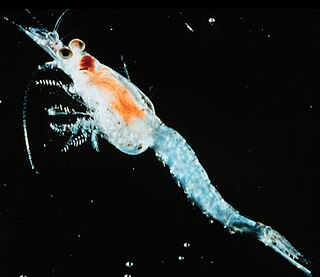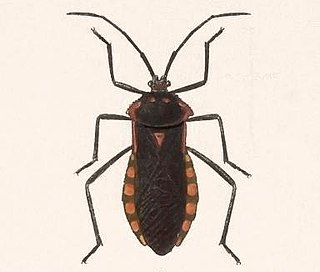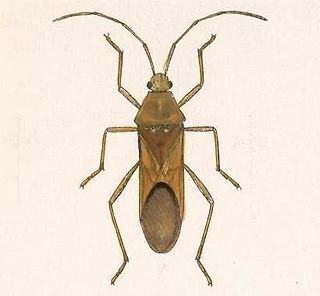
Coronaviruses are a group of related RNA viruses that cause diseases in mammals and birds. In humans and birds, they cause respiratory tract infections that can range from mild to lethal. Mild illnesses in humans include some cases of the common cold, while more lethal varieties can cause SARS, MERS and COVID-19, which is causing the ongoing pandemic. In cows and pigs they cause diarrhea, while in mice they cause hepatitis and encephalomyelitis.

Horseshoe bats are bats in the family Rhinolophidae. In addition to the single living genus, Rhinolophus, which has about 106 species, the extinct genus Palaeonycteris has been recognized. Horseshoe bats are closely related to the Old World leaf-nosed bats, family Hipposideridae, which have sometimes been included in Rhinolophidae. The horseshoe bats are divided into six subgenera and many species groups. The most recent common ancestor of all horseshoe bats lived 34–40 million years ago, though it is unclear where the geographic roots of the family are, and attempts to determine its biogeography have been indecisive. Their taxonomy is complex, as genetic evidence shows the likely existence of many cryptic species, as well as species recognized as distinct that may have little genetic divergence from previously recognized taxa. They are found in the Old World, mostly in tropical or subtropical areas, including Africa, Asia, Europe, and Oceania.

Bonitos are a tribe of medium-sized, ray-finned predatory fish in the family Scombridae – a family it shares with the mackerel, tuna, and Spanish mackerel tribes, and also the butterfly kingfish. Also called the tribe Sardini, it consists of eight species across four genera; three of those four genera are monotypic, having a single species each. Bonitos closely resemble the skipjack tuna, which is often called a bonito, especially in Japanese contexts.

Onychopoda are a specialised order of branchiopod crustaceans, belonging to the superorder Cladocera.

Mysis is a genus of mysid crustaceans in the family Mysidae, distributed mainly in the coastal zone of the Arctic and high boreal seas. Several species also inhabit northern freshwater lakes and the brackish Caspian Sea. Fifteen species are recognized. Body lengths range from 1 to 3 centimetres.

Scolopendridae is a family of large centipedes.

The clade Multicrustacea constitutes the largest superclass of crustaceans, containing approximately four-fifths of all described crustacean species, including crabs, lobsters, crayfish, shrimp, krill, prawns, woodlice, barnacles, copepods, amphipods, mantis shrimp and others. The largest branch of multicrustacea is the class Malacostraca.

Hypselonotus is a genus of leaf-footed bugs in the family Coreidae. There are about 12 described species in Hypselonotus.
Lineostethus is a genus of stink bugs in the family Pentatomidae. There are at least four described species in Lineostethus.
Prothalpia is a genus of false darkling beetles in the family Melandryidae. There are at least four described species in Prothalpia.

Cimolus is a genus of leaf-footed bugs in the family Coreidae. There are at least four described species in Cimolus.
Rocconota is a genus of assassin bugs in the family Reduviidae. There are about 10 described species in Rocconota.

Oplomus is a genus of predatory stink bugs in the family Pentatomidae. There are about nine described species in Oplomus.

Sephina is a genus of leaf-footed bugs in the family Coreidae. There are more than 20 described species in Sephina.

Savius is a genus of leaf-footed bugs in the family Coreidae. There are about nine described species in Savius.
Tenuirostritermes is a genus of termites in the family Termitidae. There are about five described species in Tenuirostritermes.
Mamurius is a genus of leaf-footed bugs in the family Coreidae. There are at least two described species in Mamurius.

Amphotis is a genus of sap-feeding beetles in the family Nitidulidae. There are about eight described species in Amphotis.

Chydoridae is a family of water fleas in the order Anomopoda. There are more than 50 genera and 520 described species in Chydoridae. A lot of Chydoridae species are non-native species, many of which pose a great threat to aquatic ecosystems.
Alonella is a genus of Chydoridae.














